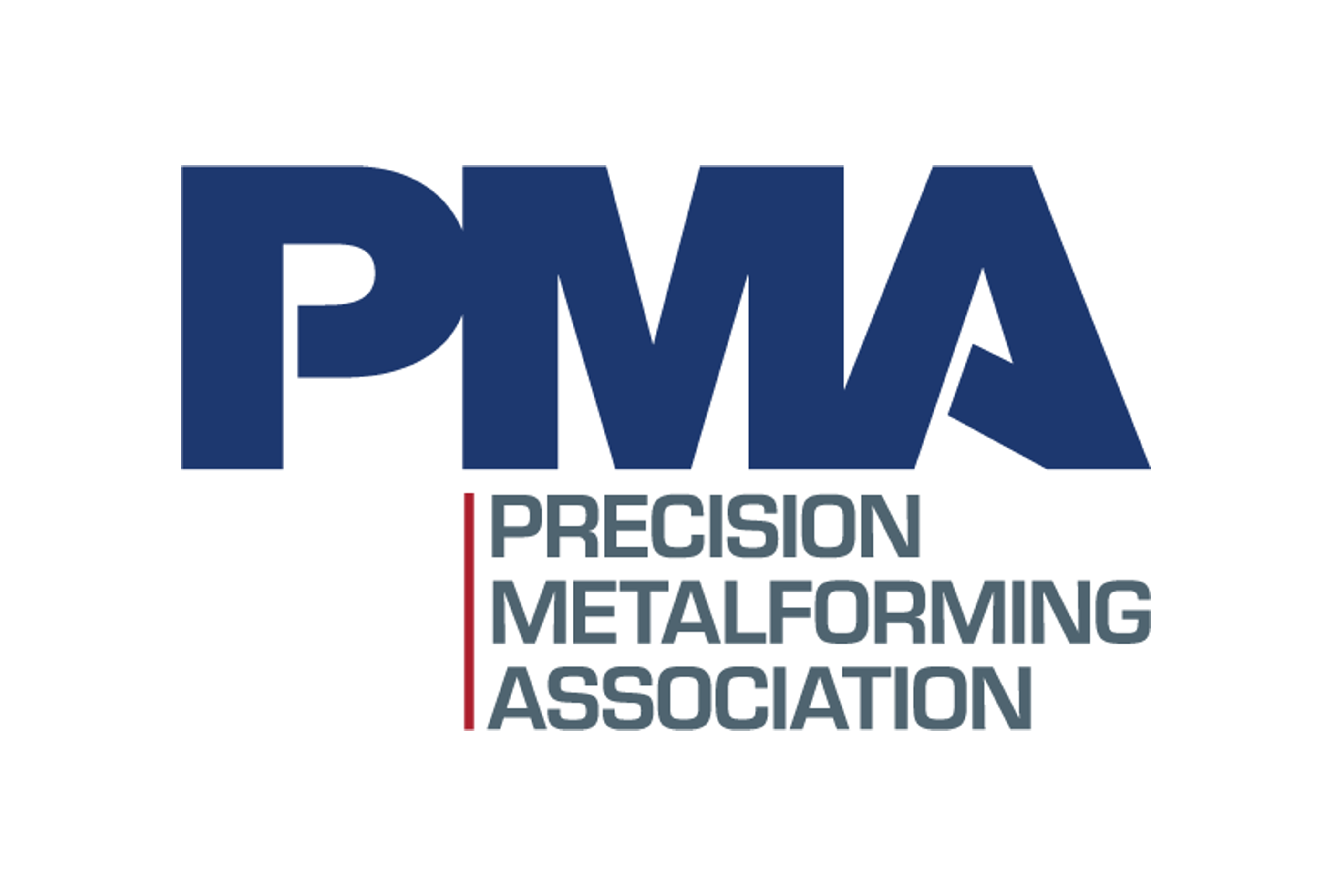Market Data
March 17, 2025
Most steelmaking raw material costs rise further in March
Written by Brett Linton
Prices for five of the seven steelmaking raw materials tracked by SMU increased from February to March, according to our latest analysis. Collectively, select material prices have risen 3% in the past month and are 6% higher than they were three months ago.
Pig iron, busheling scrap, shredded scrap, zinc, and aluminum all saw month-over-month (m/m) price increases, while iron ore and coking coal declined. Prices for four of the seven materials are higher than they were three months ago, and most materials are more expensive than they were this time last year.
Table 1 shows the latest prices for each product and their changes from recent months.
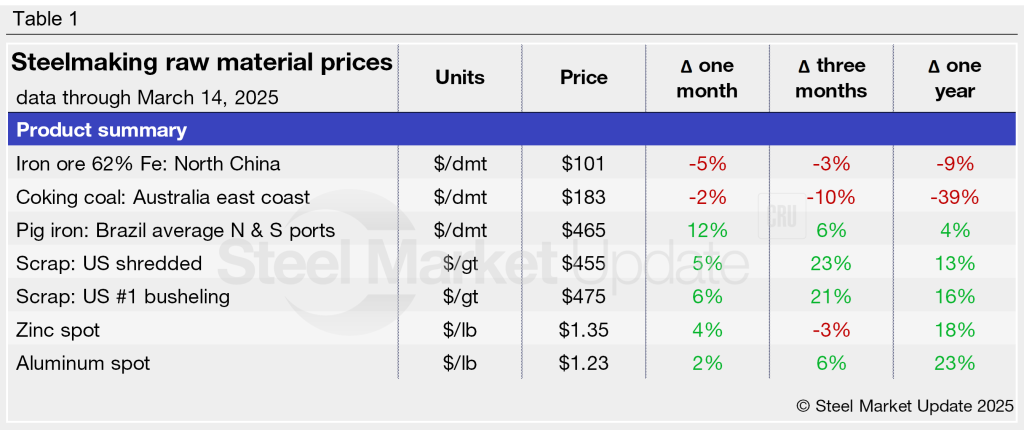
Iron ore
The import price of 62% Fe Chinese iron ore fines has declined for two consecutive weeks after reaching a seven-month high of $109 per dry metric ton (dmt) in late February. Prior to February, prices had hovered between $98-106/dmt since October. As of March 12, the latest weekly spot price is down to an eight-week low of $101/dmt delivered North China (Figure 1). Iron ore is 3% less expensive than it was three months ago and 9% cheaper than one year ago.
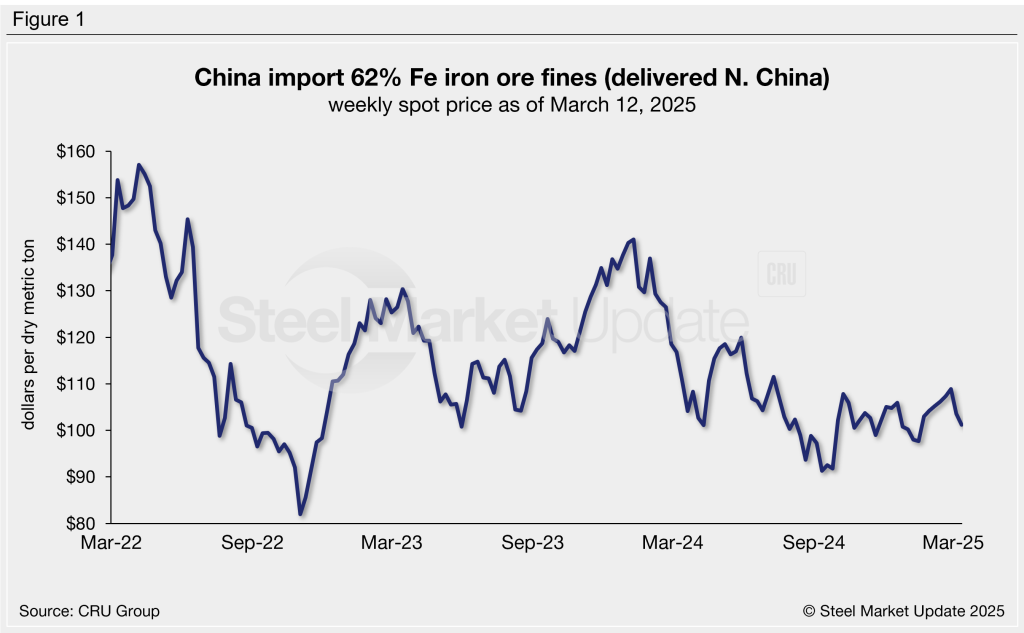
Coking coal
Premium hard coking coal prices have declined across the last year and a half, recently reaching a three-year low of $182/dmt last September. The latest price is at a five-month low of $183/dmt this week (Figure 2). Coking coal is 10% less expensive than it was three months ago and 39% lower than this time last year.
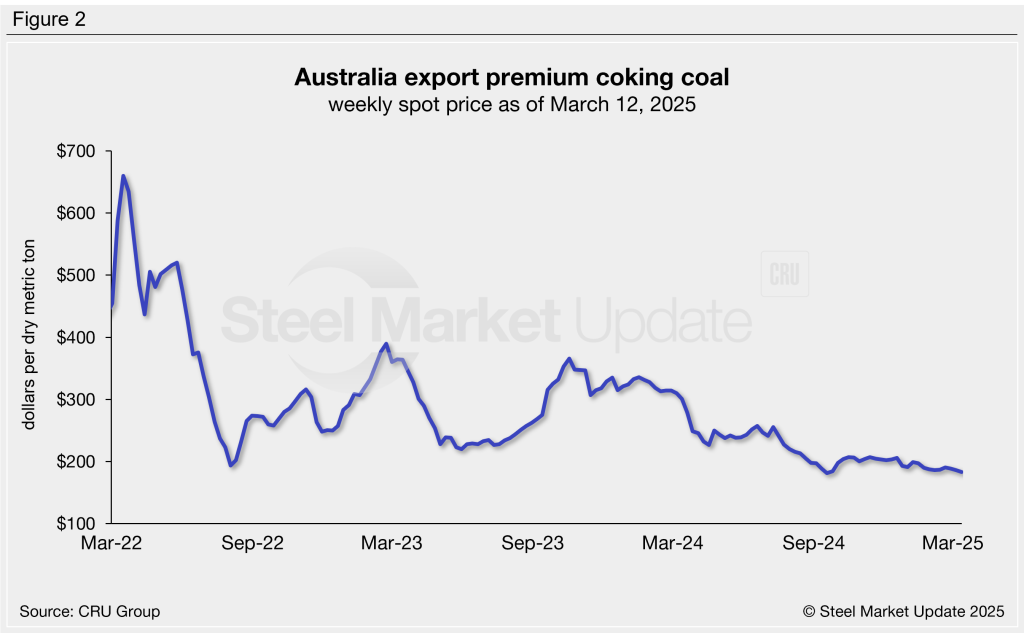
Pig iron
After falling to a four-year low of $415/dmt last month, pig iron prices rebounded 12% in March to $465/dmt, the highest rate seen in nine months (Figure 3). Prices are 6% more expensive than levels three months ago and 4% greater than March 2024.
Recall that in 2022 pig iron prices soared to a historic high of $975/dmt following the invasion of Ukraine. Most of the pig iron imported to the US had come from Russia, Ukraine, and Brazil. This report uses Brazilian prices, averaging north and south port prices.
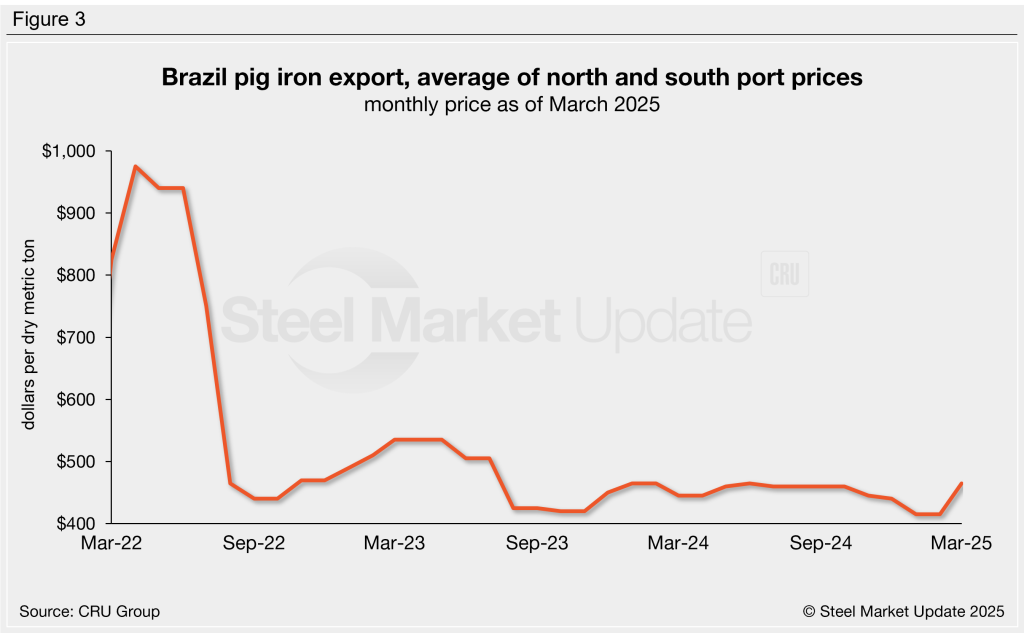
Scrap
Steel scrap prices have been climbing higher since the start of the year. SMU’s scrap indices increased 5-6% m/m in March, with shredded scrap up $22 per gross ton (gt) to $455/gt and busheling scrap up $27/gt to $475/gt (Figure 4). Scrap is up as much as 23% compared to prices of three months ago and 13-16% lower than those seen this time last year.
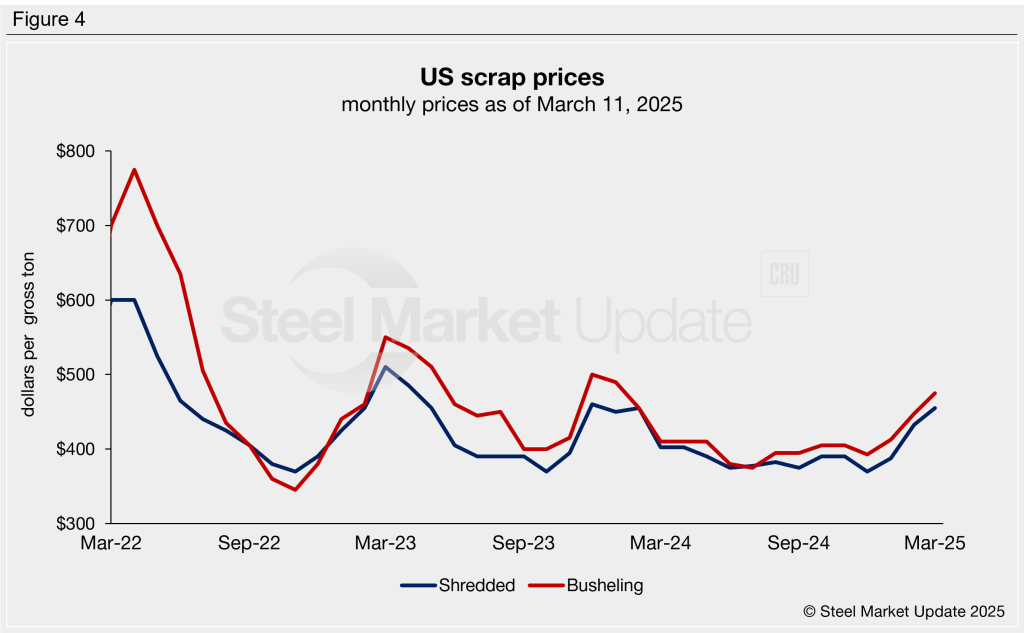
Fluctuations in scrap and iron ore prices provide insight into the competitiveness of integrated (blast furnace) mills, whose primary feedstock is iron ore, vs. mini-mills (electric arc furnace), whose primary feedstock is scrap. Figure 5 compares the prices of these two mill raw materials.
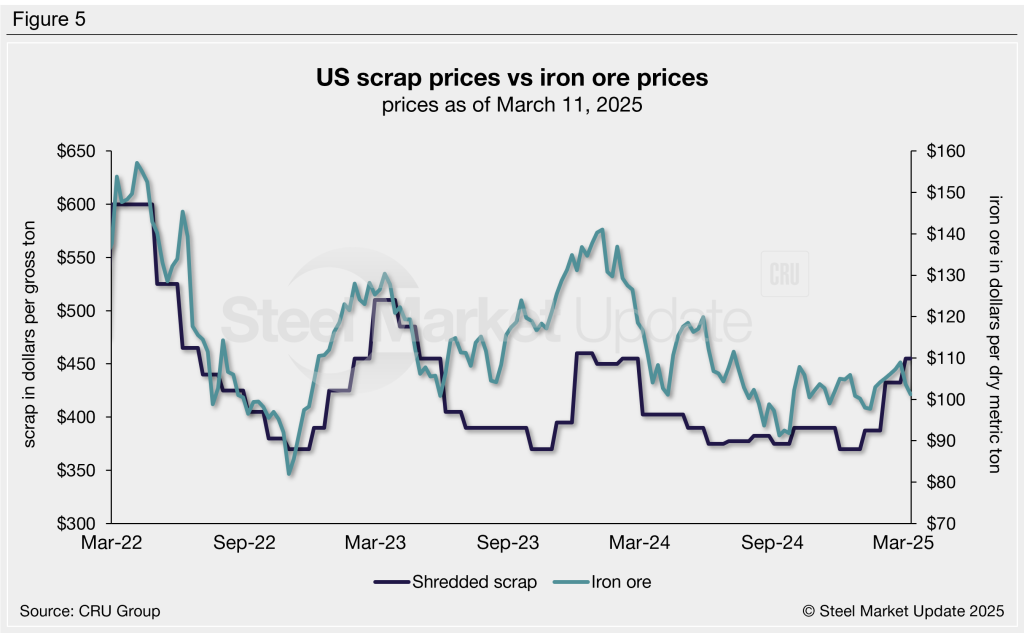
To compare these two mill feedstocks, SMU divides the shredded scrap price by the iron ore price to calculate a ratio. A high ratio favors the integrated mills, a lower ratio favors the mini-mill producers.
Integrated mills mostly held the cost advantage from late 2021 through mid-2023, then it briefly shifted to mini-mill producers in the second half of 2023 (Figure 6). After bouncing around in 2024, the ratio has slightly favored integrated mills since last August. The ratio has trended higher in 2025, mostly over last two weeks, rising to a 21-month high of 4.50 as of March 11.
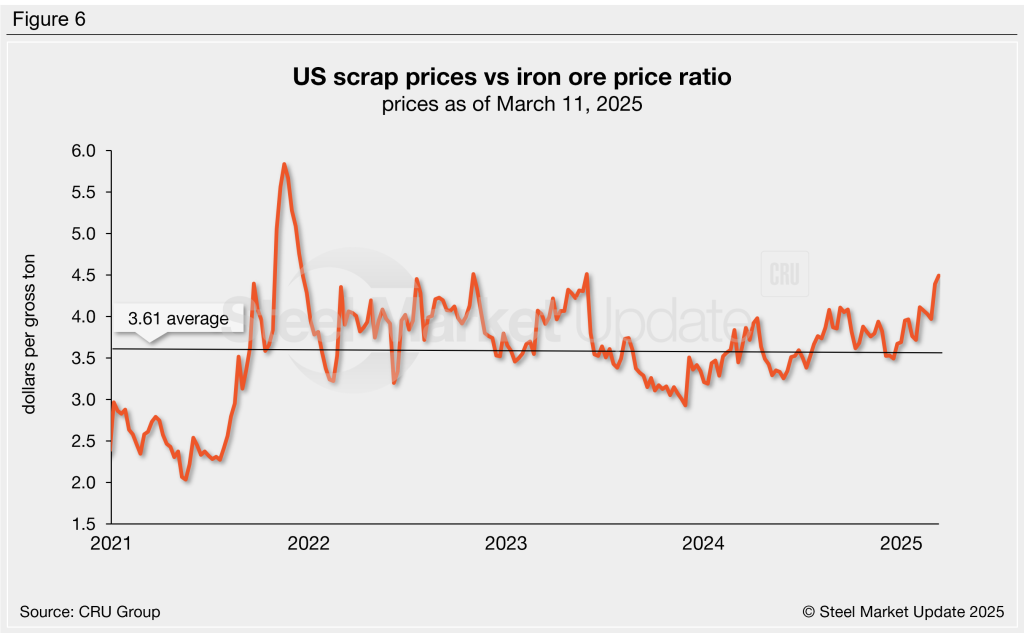
Zinc and aluminum
Zinc and aluminum are used in some coated steel products. Surges in spot prices (like those seen last October) can prompt steel mills to increase their coating extras.
Following a multi-month gradual decline, zinc prices have moved higher in the last month; the latest LME cash price for zinc is $1.35 per pound as of March 14, 4% higher than a one month ago. Zinc prices are still 3% lower than those seen three months prior, but 18% more expensive than March 2024 levels (Figure 7).
Aluminum prices have increased since the start of the year. The latest LME cash price is $1.23/lb, up 2% m/m. Aluminum prices are 6% higher than they were three months ago and 23% more expensive than this time last year. Note that aluminum spot prices sometimes have large swings and return to typical levels within a few days, as seen twice in Figure 7.







